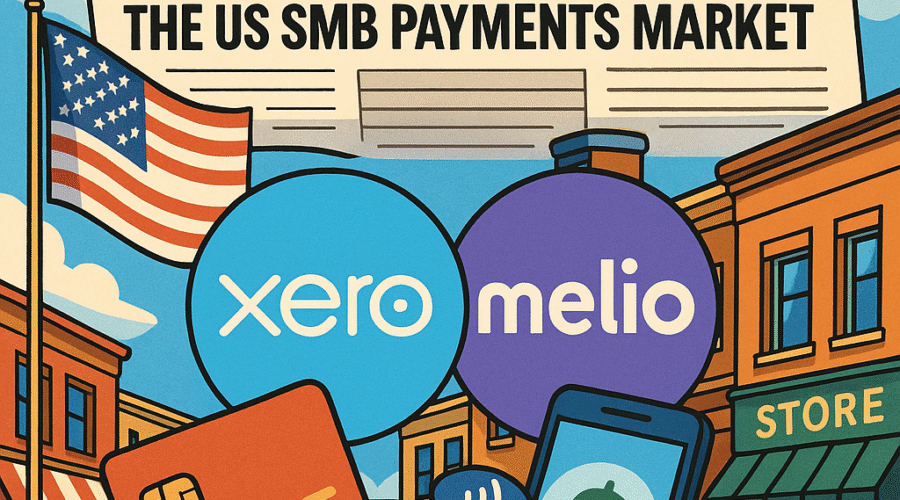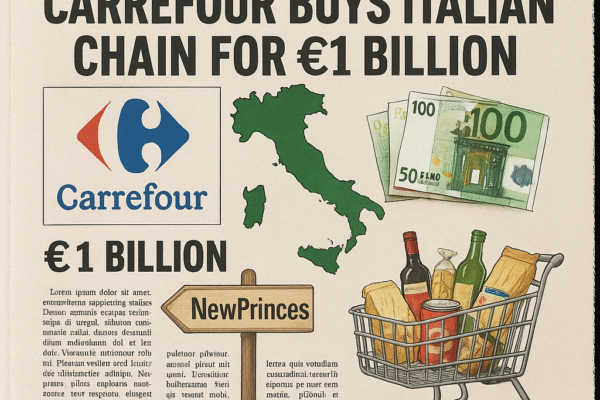In a landmark transaction reshaping the fintech landscape, New Zealand’s Xero Limited (ASX: XRO) has announced its acquisition of Israeli payments platform Melio for $2.5 billion upfront plus $500 million in performance-linked payments[1][10][15]. This strategic move directly addresses the critical integration gap between accounting and payments for US small-to-medium businesses (SMBs), with Xero projecting the deal will triple its North American revenue immediately and double combined revenue by 2028[2][8][15]. The acquisition represents a calculated bet on capturing market share in the $29 billion US SMB payments sector while advancing Xero’s “3×3 strategy” targeting triple revenue and customer growth by 2028[2][8][10].
💼 Seasoned CorpDev / M&A / PE expertise
Strategic Imperatives Behind the Transaction
Addressing the Integration Gap in SMB Financial Workflows
The acquisition fundamentally solves a critical market inefficiency where 78% of US SMBs prioritize integrated accounting and payments solutions yet only a minority currently access such unified platforms[10][13]. Melio’s accounts payable (A/P) automation technology complements Xero’s core accounting capabilities by enabling seamless bill payments, vendor management, and cash flow visibility within a single ecosystem[1][10][13]. This integration eliminates manual data entry and reconciliation pain points that plague SMB operators, creating what Xero CEO Sukhinder Singh Cassidy describes as “a step change in our North America scale”[1][10]. The technological synergy allows both companies to extend beyond their traditional customer segments—Xero beyond micro-SMBs and Melio beyond payment specialists—creating a comprehensive financial operating system for businesses with 1-100 employees[8][10].
Accelerating the 3×3 Growth Strategy
Xero’s acquisition directly advances its three-pillar “3×3 strategy” through measurable operational leverage. First, Melio’s 80,000 customers and $30 billion annual payment volume immediately expand Xero’s North American revenue base by approximately 300% while increasing average revenue per user (ARPU)[2][8][15]. Second, Melio’s embedded finance partnerships with institutions like Fiserv, Capital One, and Shopify provide syndicated distribution channels to millions of SMBs beyond Xero’s direct sales funnel[4][10][16]. Third, the combined entity shifts Xero toward a dual revenue model blending subscriptions with transaction fees, diversifying beyond pure SaaS economics into payment processing margins[2][8][10]. This strategic alignment explains why Xero accepted a valuation of 13.4x Melio’s March 2025 annualized revenue of $187 million—a premium justified by projected 127% CAGR sustainability through cross-selling opportunities[5][14][15].
Financial Architecture and Deal Mechanics
Transaction Structure and Funding Sources
The $3.9 billion Australian dollar transaction features a multi-tiered financing approach balancing equity dilution with debt leverage. Xero structured the $2.5 billion upfront consideration as $1.85 billion from institutional placement at A$176/share (9.4% discount to pre-announcement price), $554 million in Xero scrip issued to Melio shareholders, $615 million via unsecured revolving credit facility, and $923 million drawn from existing cash reserves[5][12][15]. The additional $500 million in contingent payments includes $370 million tied to specific financial outperformance thresholds and $130 million subject to employee retention milestones over three years[10][12]. This earnout structure aligns investor protection with performance incentives while mitigating integration execution risk[12][14].
Valuation Rationale and Synergy Projections
Analysts note the 13.4x revenue multiple appears rich against Melio’s $154 million FY25 loss but becomes defensible when accounting for projected synergies[14][15]. Immediate revenue uplift combines Melio’s $187 million annualized revenue with Xero’s existing US operations, while cost synergies of $20 million and revenue synergies of $70 million are projected by FY28 through platform integration and cross-selling[8][15]. The transaction’s strategic premium becomes evident when considering Melio’s distribution advantages: its embedded finance network provides immediate access to SMBs through banking partners, while Xero’s accountant relationships offer Melio premium placement in professional financial workflows[10][13][16]. This complementary distribution explains why RBC Capital Markets acknowledged the deal’s strategic logic despite “full” pricing[3][14].
Market Dynamics and Competitive Implications
The $29 Billion US SMB Payments Opportunity
Xero’s acquisition targets a rapidly expanding addressable market where US SMB payment volumes exceed $29 billion annually, fueled by digital transformation among 33 million small businesses[2][8][10]. The integrated accounting-payments niche remains underserved despite high demand, with incumbents like QuickBooks (Intuit) and Square offering fragmented solutions requiring third-party integrations[8][13]. Melio’s technology specifically addresses this gap through its “Cashflow Central” platform—developed with Fiserv—which provides banks with white-labeled AP automation, creating a syndicated distribution moat against pure-play fintech competitors[4][16]. This embedded finance approach allows Xero-Melio to capture payment volume through bank channels without direct customer acquisition costs, significantly improving unit economics[8][10].
Competitive Landscape Reshuffle
The transaction forces strategic reassessments across three competitor segments: accounting platforms (QuickBooks, FreshBooks), payment processors (Bill.com, Stripe), and vertical SaaS providers (Shopify, Toast). QuickBooks faces particular pressure as Xero-Melio now replicates its integrated offering while leveraging Xero’s strong accountant relationships—a key customer acquisition channel[8][13]. For payment specialists like Bill.com (which previously explored acquiring Melio), the deal removes a potential consolidation target while creating a formidable competitor with combined accounting-payments DNA[4][16]. Most significantly, the acquisition signals that vertical SaaS platforms may accelerate financial services bundling, as evidenced by Shopify’s strategic investment in Melio’s 2024 funding round[4][16].
Execution Risks and Integration Challenges
Regulatory Hurdles and Antitrust Scrutiny
The transaction faces material regulatory risk through required Hart-Scott-Rodino (HSR) antitrust approval, prompting Xero to agree to a $37.5 million breakup fee should regulators block the deal[12]. While no direct market share thresholds are breached—Xero holds under 7% US accounting share while Melio serves fractional payment volume—regulators may scrutinize the combined entity’s control over SMB financial data flows[3][12]. Additional compliance complexity arises from Melio’s money transmitter licenses across multiple US states, requiring individual change-of-control approvals that could delay integration timelines[12]. These regulatory variables introduce execution uncertainty despite Xero securing binding shareholder approvals from majority Melio investors[12].
Cultural Integration and Talent Retention
Post-merger integration presents significant cultural challenges merging Xero’s corporate structure with Melio’s startup DNA, particularly given Melio’s recent workforce reductions. The Israeli fintech conducted layoffs in 2023-2024 affecting dozens of US and Israeli employees before stabilizing at 600 staff (400 in Israel)[4][16]. Xero’s contingent payments include $130 million earmarked specifically for employee retention, acknowledging the critical importance of retaining Melio’s product and engineering talent[10][12]. Integration leadership further complicates with Melio CEO Matan Bar assuming control of the combined US operations—a structure that must reconcile Xero’s corporate processes with Melio’s agile development culture[10][13]. Historical challenges in Xero’s US expansion suggest this cultural integration will prove as critical as technological synergies[3][18].
Strategic Implications for Fintech Investment
Valuation Reset and Down-Round Psychology
Melio’s journey from $4 billion valuation (2021) to $2 billion (2024) before this $3 billion exit illustrates broader fintech valuation recalibration[4][6][16]. Despite a tenfold revenue increase since 2021—crossing $100 million ARR in 2023—Melio’s 2024 down-round reflected investor skepticism toward payment infrastructure multiples absent clear profitability[6][16]. Xero’s acquisition premium thus signals renewed confidence in growth-stage fintech, potentially resetting valuation benchmarks for comparable companies like Bill.com and Tipalti. The deal structure—with 20% consideration in Xero stock—further provides Melio’s investors (Accel, Bessemer, Thrive Capital) with continued upside through Xero’s public currency[4][10][16].
Consolidation Trends in SMB Financial Technology
This transaction exemplifies the accelerating consolidation in SMB fintech, following Munich Re’s acquisition of Next Insurance and potentially preceding further vertical integration. The “integrated financial stack” thesis driving this deal suggests investors will increasingly prioritize platforms combining accounting, payments, payroll, and banking services over point solutions[2][8][10]. For private equity, this creates opportunities in roll-up strategies targeting complementary fintech modules—particularly in underpenetrated international markets where Xero-Melio may expand post-integration[9]. Most consequentially, the deal validates embedded finance distribution through non-bank channels, likely accelerating partnerships between vertical SaaS platforms and payment infrastructure providers[4][10][16].
Conclusion: Redefining the SMB Financial Ecosystem
Xero’s acquisition of Melio represents a watershed in fintech consolidation, creating the first fully integrated accounting-payments platform purpose-built for US small businesses. The transaction’s success hinges on seamless execution across three dimensions: technological integration to unify accounting and payment workflows, cultural assimilation of Melio’s Israeli engineering talent, and regulatory navigation across multiple jurisdictions[10][12][14]. Should these align, the combined entity projects formidable competitive positioning against both legacy accounting providers and payment specialists[8][13]. For investors, the deal signals renewed confidence in growth-stage fintech despite recent valuation resets, while for SMBs, it promises the long-sought integration between financial management and payment operations[1][10][13]. As
Sources
https://en.globes.co.il/en/article-xero-buys-israeli-fintech-co-melio-for-3b-1001513741, https://www.ainvest.com/news/xero-melio-acquisition-strategic-play-dominate-smb-financial-stack-2506/, https://economictimes.com/tech/startups/new-zealands-xero-to-buy-us-fintech-melio-for-2-5-billion/articleshow/122059178.cms, https://www.calcalistech.com/ctechnews/article/286fevl9c, https://smallcaps.com.au/xero-acquire-us-payments-firm-melio-push-american-smb-market/, https://en.globes.co.il/en/article-exclusive-payments-platform-melio-raises-150m-1001492689, https://finimize.com/content/xero-plans-big-move-with-3-billion-melio-acquisition, https://www.ainvest.com/news/xero-acquisition-melio-strategic-masterstroke-market-dominance-2506/, https://thecarriedinterest.com/category/theme/fundraising/, https://www.prnewswire.com/news-releases/xero-to-acquire-melio-a-leading-us-smb-bill-pay-solution-to-accelerate-global-growth-302490268.html, https://data-api.marketindex.com.au/api/v1/announcements/XASX:XRO:3A670500/pdf/inline/xero-to-acquire-melio-to-accelerate-us-growth-raises-equity, https://announcements.asx.com.au/asxpdf/20250625/pdf/06l2b9ktmmnyfy.pdf, https://blog.xero.com/uk/news-events/xero-to-acquire-melio/, https://www.livewiremarkets.com/wires/analysts-fund-managers-cautious-on-xero-s-monster-melio-acquisition, https://www.sharecafe.com.au/2025/06/25/xero-to-acquire-melio-in-us2-5bn-deal-to-accelerate-us-growth/, https://www.calcalistech.com/ctechnews/article/s1ajjsrg1e, https://www.xero.com/nz/, https://en.wikipedia.org/wiki/Xero_(company)





